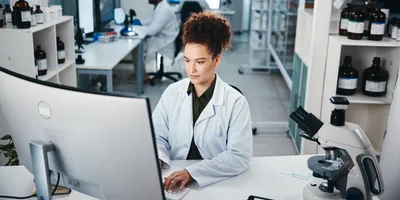Hot plates are versatile tools in the laboratory, playing a crucial role in hot plate chemistry by heating and mixing substances in a controlled environment. While invaluable, they also pose safety risks if not used correctly. This article provides ten essential tips for the safe and efficient use of hot plates in the lab, emphasizing the importance of hot plate chemistry and incorporating best practices to prevent accidents and ensure the longevity of your equipment.
10 Tips for Safe Hot Plate Chemistry
1. Use Heat-Resistant Glassware
When heating materials in a bath, always ensure the glassware is heat-resistant. Inspect the glassware for visible cracks or defects, as damaged glass can fail under heat. Never place soft glass, jars, or a glass flask directly on a hot plate. Additionally, ensure the hot plate surface is larger than the object being heated to prevent overhanging and instability.
2. Facilitate Boiling with Boiling Stones
When bringing liquids to a boil, add boiling stones to facilitate the process and reduce the risk of superheating. This simple step ensures even boiling and helps prevent splashing or bumping.
3. Avoid Overheating Dry Vessels
Be cautious when condensing materials in a vessel until they are completely dry. Overheating dry vessels can lead to cracking or breakage due to excessive thermal stress. Always monitor your materials closely and remove the heat source once the desired dryness is achieved.
4. Adjust Heat Settings Appropriately
For liquids, including water, use medium or medium-high settings. Avoid using high settings for low-boiling-point liquids, as surface temperatures can reach up to 540°C (1004°F), causing rapid evaporation and potential accidents. Use lower settings for better control and safety.
5. Avoid Using Metal Pans
Heating metal pans on hot plates can damage the equipment and pose a shock risk. Metal pans can cause uneven heat distribution and increase the likelihood of electrical failures. Use appropriate laboratory containers designed for hot plate use to maintain the integrity of your hot plate chemistry experiments.
6. Handle Hot Objects Safely
Always use tongs or rubber-coated, heat-resistant gripping devices to remove objects from the hot plate. The same applies when pouring hot liquids. Avoid using bare hands or inappropriate tools that can lead to burns or spills.
7. Keep Flammable Materials Away
Do not store volatile or flammable substances near a hot plate. Accidental ignition of these materials can result in severe laboratory accidents. Store such substances in designated flammable storage areas away from heat sources.
8. Limit the Use of Older Hot Plates for Flammable Materials
Older hot plates may not have modern safety features such as automatic shut-off or overheat protection. Limit their use for flammable or highly reactive materials, and consider replacing outdated equipment with newer, safer models.
9. Inspect for Corrosion
Regularly inspect the hot plate, especially the thermostat and electrical connections, for corrosion or damage. Corrosion can lead to sparks and increase the risk of fire or electrical shock. Schedule routine maintenance to ensure safe operation.
10. Always Turn Off the Hot Plate
The most critical safety tip is to remember to turn off the hot plate when not in use. Hot plates left on are a leading cause of lab-related injuries. Implement visual reminders, such as signs or indicators, to ensure this step is not overlooked.
Summary
By following these ten tips, you can use hot plates safely and effectively in the lab. Regular inspection, proper handling techniques, and adherence to safety protocols can significantly reduce risks and enhance your laboratory's operational efficiency. Prioritize safety to make the most of this essential piece of equipment.
Looking for more laboratory safety tips? Explore our Lab Manager Safety Certification program to gain comprehensive training in safe laboratory practices. Enroll today and enhance your skills!
Hot plates are versatile tools in the laboratory, playing a crucial role in hot plate chemistry by heating and mixing substances in a controlled environment. While invaluable, they also pose safety risks if not used correctly. This article provides ten essential tips for the safe and efficient use of hot plates in the lab, emphasizing the importance of hot plate chemistry and incorporating best practices to prevent accidents and ensure the longevity of your equipment.
10 Tips for Safe Hot Plate Chemistry
1. Use Heat-Resistant Glassware
To continue reading this article, sign up for FREE to

Membership is FREE and provides you with instant access to eNewsletters, digital publications, article archives, and more.












